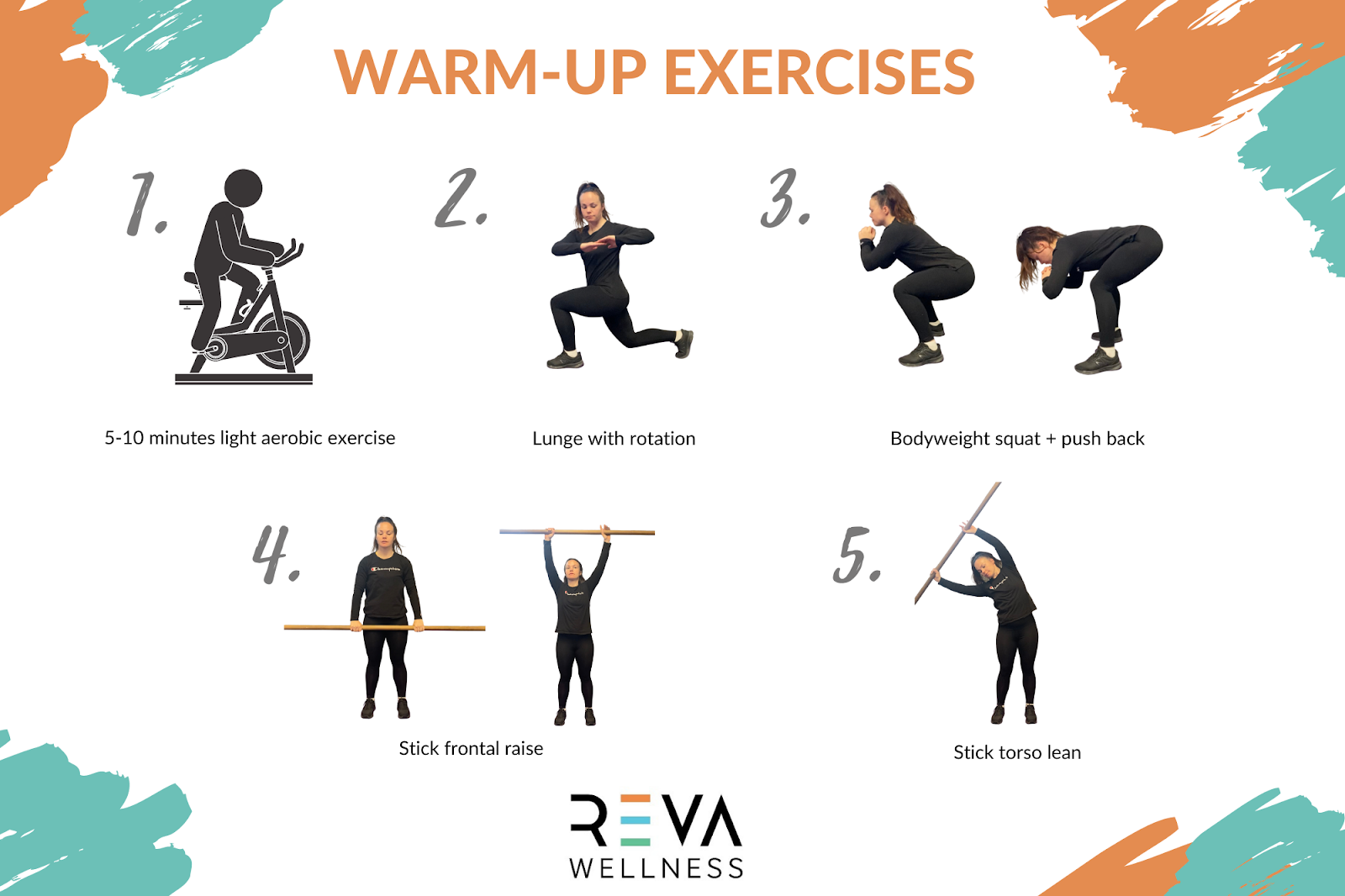Why Warm Up for Exercise?
Temperatures are cooling down, giving us even more reason to want to get warm! Exercise is obviously a fantastic way to warm up... But before you warm up with exercise, you also need to warm up for exercise... We know, it’s a lot to ask.
Warming up for exercise becomes even more important in the colder months. And the reasons behind it go beyond being able to use your fingers to add banger tunes to your Spotify queue...
What are the goals of a warm-up?
Overall, the goals of a warm-up are to set up for an effective training session and also to avoid injuries or other unwanted “niggles” that can result from exercising with a body that’s not ready to exercise. Many of us hit the gym after work for example. After spending all day sitting at the computer, it's likely that neither the body nor the mind are set up to hit a 45-minute boxfit session!
Exercise involves a range of body systems, and a warm-up encourages these systems to wake up and ‘become acquainted' prior to the more challenging aspects of an exercise session.
During a warm-up, our cardiovascular system is responsible for increasing blood flow to our muscles. In doing so, our body temperature increases and our musculoskeletal system becomes less stiff, increasing the range of motion of our joints. This is crucial - as contracting and stretching cold, stiff muscles commonly leads to injury. This is the cause of many social football injuries that come from running straight onto the field after a long day at work!
The neurological system also has a role to play. Our neural pathways act as the communication point between our brain and our muscles. Think of your day sitting at the desk as a vacation for your muscles… The warm-up is a chance to catch up with the boss before doing a big presentation! We need to “prime” our neural/musculoskeletal pathways for exercise and get that brain - muscle connection going before we throw ourselves into the deep end.
Lastly, there are metabolic changes that happen during a warm-up. Your hormonal levels become favoured toward energy availability, giving your muscles easier access to fuel. Have you ever noticed how the first portion of a run feels like you’ll never be able to finish it and then suddenly you wonder what you were complaining about? That’s what's going on there.
How to Warm-up
A good warm-up should last at least 5-10 minutes and use all of the major muscle groups that you will be using throughout the exercise session - it’s as simple as that! Stretch the muscles, move the joints through the necessary ranges of motion, and get some blood flow to the tissues.
To take it a step further, you might want to think about what the exercise session or sport involves, and “prime” all of your systems above with those movements or energy systems in mind. For example, if your session involves heavy squats, including some bodyweight squat variations is a smart move. If you’re going to do interval training on the bike, spending 5-10 minutes cycling at a lower intensity is recommended to gradually bring your heart rate and respiration rate up, before you kick into the sprints.
Now we would hate to give you an order with no help as to how to fulfill it, so below are our 5 go-to warm-up exercises for hitting the gym after work specifically.
After your aerobic warm-up, perform each exercise for at least 60 seconds! Your body should feel as though it is moving freely before you get into your session.
Author: Tessa Nielsen
#Wellness #Corporatewellness #wellbeing #healthblog #exercisephysiology #musculoskeletal #injury #pain #physio #physiotherapy #Sydney







